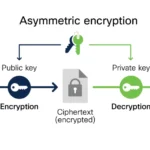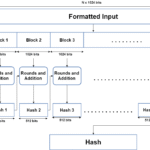In the realm of financial transactions, the integration of EMV (Europay, MasterCard, and Visa) chip technology into credit cards has become a widely embraced standard. Yet, despite its proliferation, questions persist regarding the efficacy and security that these chips purportedly offer. Do these embedded microchips genuinely enhance the safety of consumer transactions, or are they merely a superficial solution to a far more complex problem? The answer to this inquisition is multifaceted, encompassing various dimensions including transaction security, potential vulnerabilities, and the evolving landscape of fraud prevention.
At the core of the discourse lies the fundamental functionality of EMV chips themselves. Unlike traditional magnetic stripe cards, which store static information, EMV cards utilize dynamic data that changes with each transaction. This is accomplished through cryptographic algorithms that create a unique transaction code for every financial exchange. In theory, this significantly reduces the likelihood of card duplication, thereby offering a safeguard against one of the most insidious forms of credit card fraud: cloning.
Moreover, the chip technology is coupled with secure PIN entry or signature verification, depending on the region and card issuer, which further fortifies the defense against unauthorized usage. In places where EMV migration is complete, studies have consistently highlighted a decline in in-person counterfeit fraud. As merchants adapt to the new technology, data breaches attributable to the exploitation of static magnetic stripe data are becoming increasingly rare.
Yet, it would be remiss to conclude that the deployment of chips alone is sufficient to eradicate the threat of fraud. While the adoption of EMV technology has indeed led to a marked decrease in counterfeiting at physical retail locations, cybercriminals have evolved, redirecting their efforts toward online transactions and card-not-present fraud. These forms of fraud, which do not necessitate the physical presence of the card, exploit the vulnerabilities inherent in digital transaction systems. Thieves can utilize stolen card information to make purchases on e-commerce platforms without any physical barrier to counteract.
Additionally, as consumers grow more reliant on digital wallets and contactless payment methods, the landscape is further complicated. Though contactless payments utilize similar chip technology, their convenience can invite additional risks. In a world where swiping a card from just inches away can complete a transaction, one must ponder, how secure is that? The potential for “card skimming” looms large, wherein criminals employ specialized devices to wirelessly replicate the data contained within an EMV chip without physical contact. Such risks signify that while the chip might enhance security in traditional contexts, it may also propagate new vulnerabilities in others.
This conundrum raises poignant questions about consumer awareness and responsibility. Are consumers adequately educated about the implications of using EMV technology? The reality is that many are not. This lack of understanding can lead to complacency, which could be exploited by fraudsters. Innovative security measures, if not accompanied by widespread consumer education, risk falling short of their intended objectives. Ensuring that users grasp the ramifications of their purchasing behavior, and remaining vigilant against phishing schemes and other digital traps, is crucial to maintaining the integrity of electronic transactions.
Moreover, the role of regulatory agencies and financial institutions is paramount. The adoption of EMV technology has been buoyed by mandates and directives from various governing bodies. In the United States, for instance, the introduction of EMV standardization was largely propelled by the liability shift that placed the onus on merchants for fraudulent transactions in the absence of chip technology. Such systemic adjustments demonstrate a concerted effort to bolster security measures across the board, but their implementation must be meticulously monitored and consistently updated to account for ever-evolving threats.
Technological innovation also promises to enhance security beyond EMV chips. Developments in biometric verification and blockchain technology present new avenues for heightened security measures. Biometric authentication, such as fingerprint scanning and facial recognition, serves to add an additional layer of protection on top of traditional methods. Meanwhile, blockchain’s decentralized nature offers promise in creating tamper-proof transaction ledgers. As these technologies mature, they may one day offer a more robust defense against the myriad of threats facing consumers today.
In summation, the implementation of chips in credit cards does provide a significant upgrade in transaction security, particularly against specific types of fraud. However, these benefits should not be viewed as a panacea. The dynamic nature of fraud necessitates ongoing vigilance and adaptation. Consumers must remain informed and proactive in safeguarding their personal financial information. Financial institutions, while adopting advanced technologies, should blend them with educational initiatives to empower users. As the technological landscape continues to shift, the collaborative effort between consumers and financial entities will be vital to navigate the complexities of credit card security effectively.









Leave a Comment